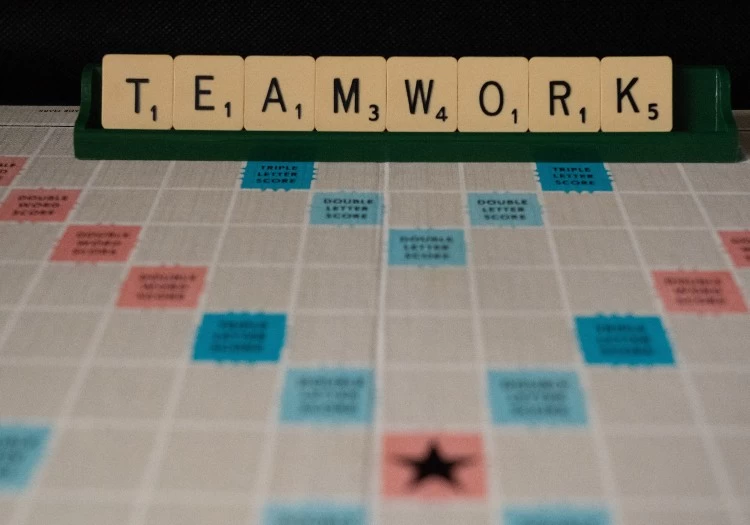Most team building activities are competitive—and for good reasons.
Competition is fun, it’s engaging, and it helps set clear goals for the exercise. And business itself is, of course, a constant competition for the attention, loyalty, and dollars of clients and customers.
But success within an organization frequently relies more on collaboration than competition. People need to work together to design the best products, make the best decisions, and deliver the best customer experiences.
How do competitive team building activities provide value to organizations? How can they be used to teach collaboration? And how can team building combine competition with collaboration to deliver the “best of both worlds”?
Here are the answers to those questions and more.
Teaching Collaboration is Hard
Why? Because for most people, competition is their default. It’s innate, hard-wired into us. Collaboration is not.
Think about it. Turn a group of small children loose on a playground, then sit back and watch. What do they do? They race. They see who can get to the top of the monkey bars the fastest. They play tag—and try not to be “it.”
When you’re in college, you’re competing against other students for grades. When you’re going out to get your first job, there may be eight people vying for that job, and only one person is going to get it. When you get the job, four people are being eyed for promotion; you’re one of them. You’re always competing.
Even within the same company in the same sales department, people will compete for regions, compete for clients…no matter how much collaboration there is, people are usually rewarded for shining, for standing out.
The results of competition are also much more straightforward to measure. It’s easy to see who crossed the finish line first, who got the high score, who’s numbers look best.
Even in team sports, where collaboration is crucial, it’s hard to tease out its exact value. To what extent did the New England Patriots win six Super Bowls because they out-collaborated their opponents—and to what extent was it the individual performance of Tom Brady? The same could be asked about Michael Jordan and the Chicago Bulls, or Maya Moore with the Minnesota Lynx.
Collaboration doesn’t come automatically. Competition does. All of that makes teaching collaboration much harder than simply telling people to share information.
So, when it comes to teaching collaboration in a team-building workshop, it is one of the most difficult things to do. An effective facilitator can model the behavior, point it out, and celebrate it. But to actually teach it and have it ingrained takes a highly skilled facilitator plus great program content. Leadership, problem-solving, and communication are teachable. Collaboration is the most difficult skill to ingrain into people.
Competition Can Be Constructive
Of course, the competitive aspect of team building is certainly valuable. It just depends upon what the goals are. At Best Corporate Events, about a third of our clients just want competition. They’re thinking A Minute to Win It, Catapult, Corporate Survivor, Go-Kart Competition, Team Olympics, or a scavenger hunt. They want groups of x employees to compete, and to have one winner, or three teams to win the Gold, Silver, and Bronze while all the other teams are losers.
We offer many different programs, in-person or online, wherein one team is going to have the most points. They win the gold medals. Competition can drive people to make extraordinary efforts to win, which is great.
But what makes these team building competitions even more impactful is that although participants are competing against other teams, they are working highly collaboratively with the other people on their team.
Team members are problem-solving, brainstorming, looking for solutions, and pumping each other up. Within each group, the efforts are tremendously collaborative, but all the groups are competing against each other. So these programs provide the best of both worlds.
But Collaboration is More Powerful
Another way to teach collaboration in a competitive team building situation is to add all of the teams’ scores together and make that the score for the activity. When participants realize the goal is to maximize every team’s score rather than simply out-scoring the other group, they will share information and discoveries in order to help the other team(s), and therefore maximize the overall point total.
Organizations often identify that realization as one of the highlights of the entire day: that even though the program was set up like a competition, someone recognized collaboration, verbalized it, and got the entire room to understand. Suddenly these teams of employees, who were all too willing to immediately compete for the highest score, started sharing information instead of hoarding it.
A twist on that is to recognize the high-scoring teams but also add the scores of all the teams together and calculate the average. Then there is a “half time” called. The highest-scoring teams are asked to share what they did, to identify and share best practices so that every team does better in the second half.
And then in the second half, though all teams are still operating and being scored independently, all the scores are added together again. The goal is for all of the teams combined to achieve a 25% or 30% improvement compared to the overall scores in the first half. That’s collaborating to compete.
Bringing It All Together
The business benefit is the mindset those employees take back to the workplace. They look for opportunities to collaborate, and are excited about it. They focus more on how their activities and communications impact the overall organization, not just their own roles.
Virtually all of our team building programs involve competition. Most incorporate some level of collaboration as well. And if the idea of improving collaboration through competition sounds really intriguing, you may want to check out our trademarked Competition to Collaboration® program.


